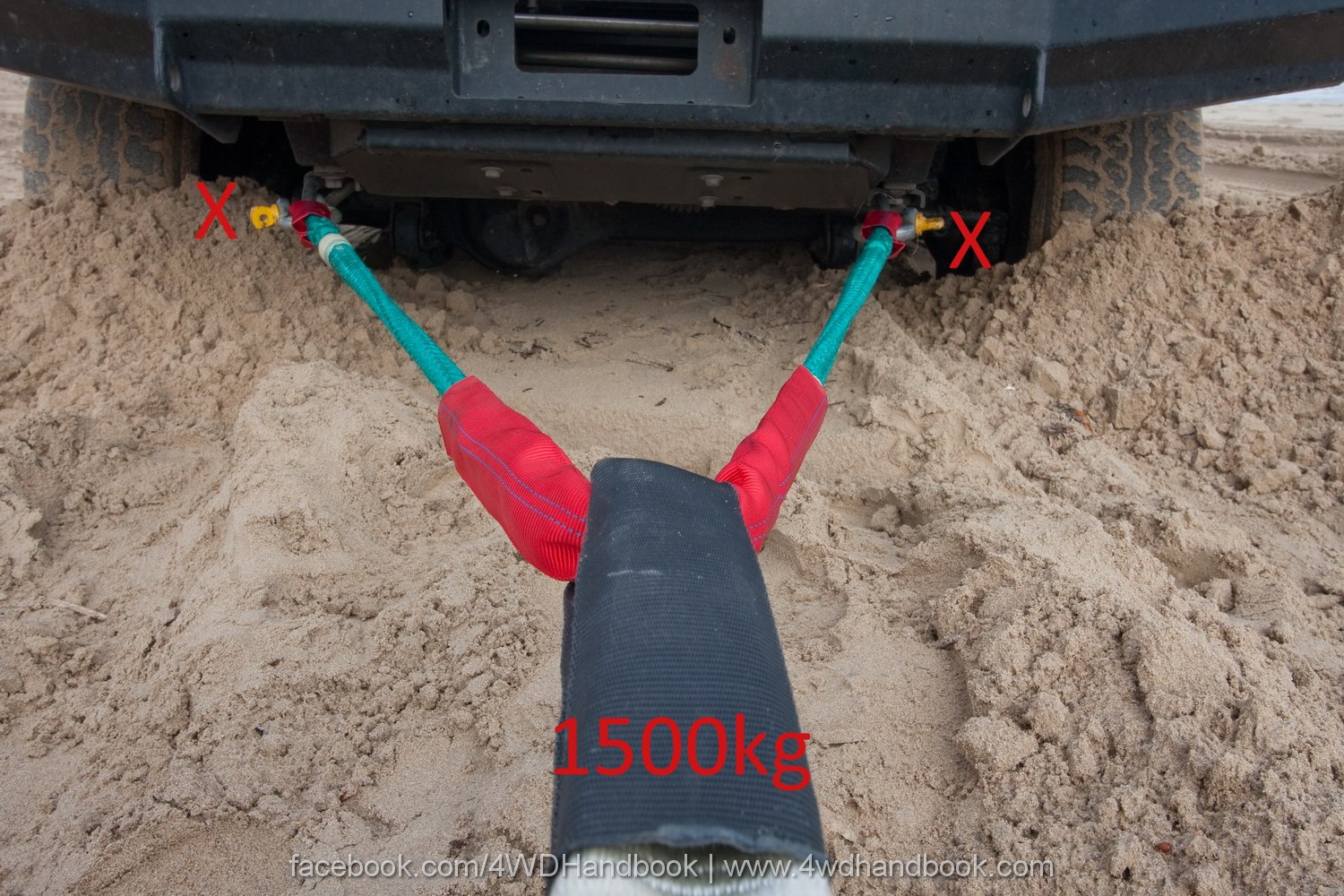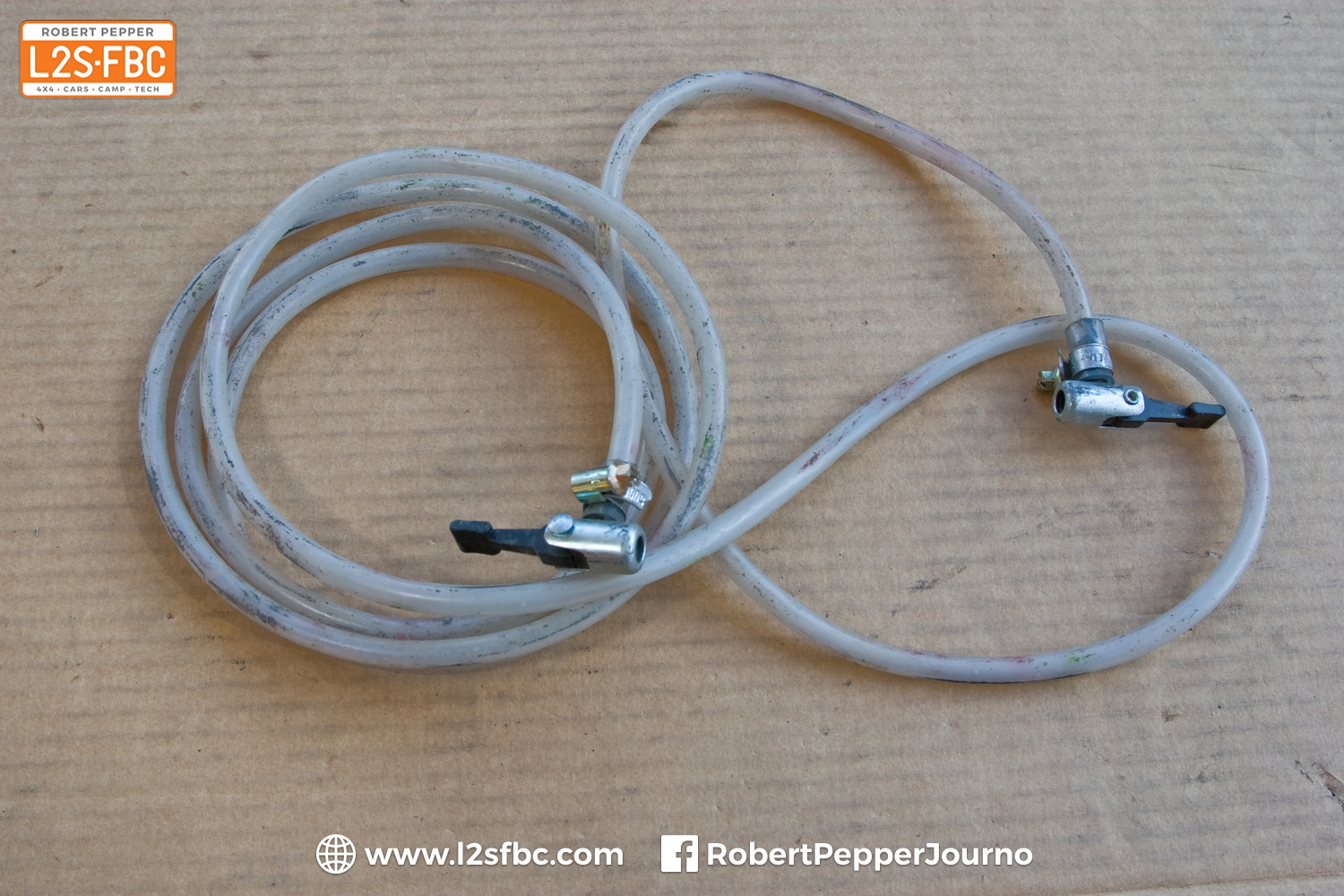
What’s the load on twin recovery points with a bridle?
Here’s a question recently posed on the Facebook page:
This vehicle is stuck and needs a 1500kg pull to move. A bridle has been used as part of the recovery system. What is the total load on each of the recovery points?
a) 3000kg
b) 1500kg
c) somewhere between 750 and 1500kg
d) 750kg
e) something less than 750kg
The answers were:
a) 3000kg = 1 vote
b) 1500kg = 1 vote
c) somewhere between 750 and 1500kg = 7 votes
d) 750kg = 11 votes
e) something less than 750kg = 1 vote
The correct answer is c. Leon Aslan correctly described the maths:
Leon Aslan 750 / cos(1/2 included angle). Included angle appears to be about 20deg in the photo, so 750/cos(10) = 761lbs!
and Simon Lun gave the game away with this excellent link to Ropebook.
But never mind all of that:
The basic point to remember is that a bridle does not halve the load on the recovery points. It equalises the load, but doesn’t halve it. The shorter the bridle, ie the greater the angle between the two halves of the bridle rope, the greater the stress on the recovery point. So, don’t use short bridles, and ‘short’ is any bridle where the angle between the two rope halves is more than 50 degrees or so.
That angle between the two rope halves is called the ‘included angle’. The Ropebook page explains all this very well.
First, draw in your bridle, making sure you have the included angle (in blue) correct. Then draw in a line marked X. Doesn’t matter how long it is. Then halve X, and put those half-lines where they are in the diagram above, from the recovery point, parallel to the original X, marked 0.5X. Then draw a line down from the end of your 0.5 to the bridle, and measure from that point back to the recovery point, the line marked Y. You’ll notice that Y is longer than 0.5X, and then you can compare the lengths of the two Y lines to the X line. The load on the recovery points in total is represented by Y.
It is easy to make a little calculator in Excel. Let’s say it’s 20 degrees, as Leon guessed.
Cell A1, included angle in degrees 20
Cell A2, load on vehicle 1500
Cell A3 =(A2/2)/COS(RADIANS(A1/2)
761.57kg.
Excel does everything in radians, so we need to convert the degrees to radians.
It seems crazy, but in the original diagram 1500kg of force in one direction is actually causing more than 1500kg of force in other directions!
Bridles also only work effectively if the bridle can equalise the load between the two points, which means one long rope, not two shorter ones joined together.


